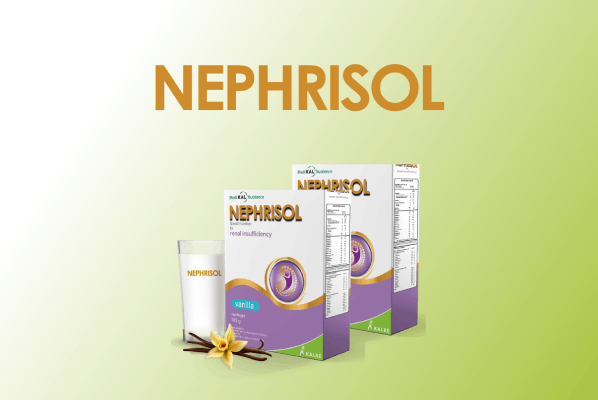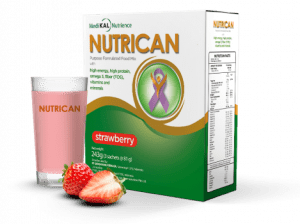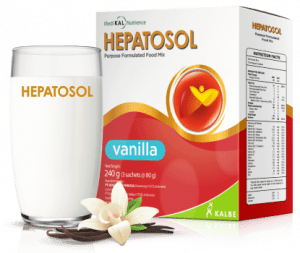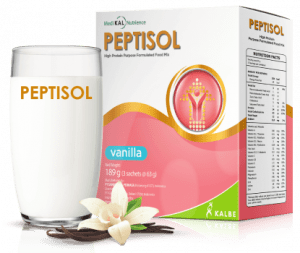




jl=.vq wld¾hlaIu;djh iy mQ¾j vh,isia wjia:dfõ miqjk frda.Ska yg ksoka.; jl=.vq frda. we;s ùu wju lsÍu i|ydu iqúfYaIfhkau ilia lrk ,o uqLdOdrfhka iy k, wdOdrfhka jqjo Ndú; l, yels fmdaIK w;sf¾lhla f,i —fk*aßfida,a˜ yªkajd Èh yel
—fk*aßfida,a˜ ys wvx.= fmdaIH mod¾: (
- wju fm%daàk w.hka
- w;HdjYH weuhsfkda wï, 09 lska iïmq¾K lr we;’ ^by< ÔjúoHd;aul jákslula we;s fm%daàk &
- úgñka j¾. 11 lska iy Lksc mod¾:hka 07 lska iïmQ¾K ù we;
- ,elafgdia rys;h
Feature Benefit
| úfYaI ,laIKh | m%;s,dN |
| ksoka.; jl=.vq frda. i`oydu úfYaIfhkau ilia lrk ,o ixfhda.hls | ffoksl fmdaIK wjYH;d iemsrSu muKlau fkdj frda.Skaf.a ffjoH ;;ajhka i|ydo jvd;a fhda.H fõ |
| wju fm%daàk w.h | mQ¾j vh,isia wjia:dfõ§ jl=.vq foflys l%shdldÍ;ajh ksisf,i mj;ajd .ekSu |
| ksoka.; jl=.vq frda.h fjkqfjkau ilia lrk ,o Lksc j¾. | kqiqÿiq laIqø fmdaIl fldgia Ndú;fhka we;súh yels Nhdkl m%;sM, j<lajhs |
| ldfndayhsfâ%g m%Njh f,i fuda,afgdafvlaiaá%ka | myiqfjka Èh fjk iq¨ nj iy wjfYdaIKh ^WKq c,h fkdjk& fõ’ fïofha yd fm%daàk j, mj;sk ;s;a; rih wju lrhs |
| fõ iy flaiSka iïñY%Kh | jvd;a l,amj;sk iy fõ.j;a fm%daàk ñY%Khla we;s lrhs |
| w;HdjYH weuhsfkda wï, 09 lska iukaú; by< ÔjúoHd;aul w.hla we;s fm%daàk | we,aìhï uÜgu by< oeóu i|yd |
| i;a;j fïofhka f;dr fõ | fudfkdawkaieÑhqf¾gâ fïo wï, iy fmd,swkaieÑshqf¾gâ fïo wï, iy uOHu m%udKfha g%hs.a,sirhsv j,ska wkQk jk w;ru ieÑhqf¾gâ fyj;a ix;Dma; fïo wï, j,g jvd wkaieÑhqf¾gâ fïo wï, m%udKh fo.=Khla muK wvx.= fõ |
| meKsrildrlhla f,i iqlarf,daia Ndú;h | reêrfha iSks uÜgug fyda ldfndayhsfâ%g mßjD;a;Sh l%shdj,shg fyda bkaishq,Ska ksIamdokhg fyda ndOd we;s fkdlrhs |
| >k;ajh ^ñ,s ,Sgr 1 g lsf,dale,ß 1.04& | k, wdOdrfhka jqjo ,nd Èh yel |
| wju Tiafud,e,sá w.h (440 mOsm/kg) | Nhdkl m%;sM, ^mdpkh& j<lajhs |
References :
1.Bellizzi V. Low Protein Diet or Nutritional Therapy in Chronic Kidney Disease?. Blood Purif 2013; 36:41-6.
2.Eustace JA, Coresh J, Kutchey C, Te PL, Gimenez LF, Scheel PJ, et.al. Randomized double-blind trial of oral essential amino acids for dialysis-associated hypoalbuminemia. [Internet]. [cited 2021 April 16th]. Available from: https://core.ac.uk/reader/82189560
3.Fouque D. Low Protein, Amino Acid and Ketoacid Diets to Slow the Progression of Chronic Kidney Disease and Improved Metabolic Control of Uremia. NutrManag Renal Dis. 2013; 209-31
4.Fouque D and Mitch WE, 2012. Dietary Approaches to Kidney Disease. In: Taal MW, Chertow GM, Mars PA, Skorecki K, Yu AS and Brenner BM. Editors. Brenner & Rector’s The Kidney. 9th ed. USA; Elsiver Saunders. 2170-204.
5.Garneata L; Mircescu G. Effect of Low Protein Diet Supplemented With Keto Acids on Progression of Chronic Kidney Disease. J Renal Nutr, 2013; 23: 210-3
6.Goldstein-Fuchs, D, LaPierre AM. 2014. Nutrition and Kidney Disease. In: Gilbert GJ, Weiner ME. Editors. National Kidney Foundation’s Primer on Kidney Diseases. Philadelphia; Elseiver Saunderz. P:467-74.
7.Ikizler TA, Burrowes JD, Byham-Gray LD, Campbell KL, Carrero JJ, Chan W, et.al. KDOQI Clinical Practice Guideline for Nutrition in CKD: 2020 Update. [Internet]. [cited 2021 April 16th]. Available from: https://www.ajkd.org/article/S0272-6386(20)30726-5/fulltext
8.NEPHRISOL[Product Information] Jakarta. Indonesia. PT Kalbe Farma Tbk; 2017
Preparation
fk*aßfid,a wdydr ,nd §fï wkqu; k, ud¾.hlska fyda idudkH f,i uqLdOdrfhka fyda ,nd .; yel
- idudkH f,i uqLdOdrfhka fk*aßfid,a ,nd .ekSu – ñ,s,Sgr 250 l m%udKhla idod .ekSu i|yd WKq c,h ñ,s,Sgr 200 lg fk*aßfid,a .%Eï 61 l tla iefIa melÜgqjla ñY% lr Èh lr .kak fi,aishia wxYl 60 jvd jeä WIaK;ajhka hgf;a WKq lr .ekSu fyda msi .ekSfuka fuys wvx.= jk fm%daàk ix>gl úkdY ù hd yel wdydr fõ,a w;r;=r § fk*aßfid,a Ndú; l< yel
- wkqu; k, ud¾.hlska ,nd §u – fï i|yd ffjoH Wmfoia wkq.ukh lrkak
- fjk;a wdldr Tiafia ,nd .ekSfuka je<lsh hq;=h
Nutrition Fact
fuu fmdaIKSh mdkfhys ñ,s ,Sgr 1 g lsf,dale,ß 1.04 l w;HdjYh weuhsfkda wï, j¾. 09 l. w;HdjYh fkdjk weuhsfkd wï, j¾. 11, úgñka j¾. 11 l iy Lksc j¾. 7 l fmdaIKh wvx.= fõ’
| fmdaIH mod¾: | tallh | tla jrlg ,efnk m%udKh | ffoksl m%;sY;h |
| le,ß | lsf,dale,ß | 260 | |
| fïofhka ,efnk le,ß | lsf,dale,ß | 50 | |
| uq¿ fïoh | .%Eï | 6 | 9% |
| fudfkdawkaieÑhqf¾gâ fïo wï,h | .%Eï | 2.5 | |
| fmd,swkaieÑhqf¾gâ fïo wï,h | .%Eï | 1.5 | |
| g%dkaia fïo wï,h | .%Eï | 0 | |
| fldf,iagfrda,a | ñ,s.%Eï | 0 | |
| ix;Dma; fïoh | .%Eï | 2 | 10% |
| fm%daàk | .%Eï | 5 | 8% |
| uq¿ ldfndayhsfâ%g | .%Eï | 48 | 15% |
| uq¿ iSkS | .%Eï | 5 | |
| iqlafrdia | .%Eï | 3 | |
| ,elafgdia | .%Eï | 0 | |
| úgñka | |||
| úgñka A | uhsfl%d.%Eï | 75 | 15% |
| úgñka C | ñ,s.%Eï | 11 | 10% |
| úgñka D3 | uhsfl%d.%Eï | 0.83 | 6% |
| úgñka E | ñ,s.%Eï | 1.7 | 10% |
| úgñka B1 | ñ,s.%Eï | 0.23 | 15% |
| úgñka B2 | ñ,s.%Eï | 0.28 | 20% |
| úgñka B5 | ñ,s.%Eï | 1 | 20% |
| úgñka B6 | ñ,s.%Eï | 0.37 | 30% |
| úgñka B12 | uhsfl%d.%Eï | 0.33 | 15% |
| f*da,sla wï,h | uhsfl%d.%Eï | 67 | 15% |
| nfhdáka | uhsfl%d.%Eï | 12 | 40% |
| Lksc j¾. | |||
| fidaähï | ñ,s.%Eï | 87 | 6% |
| fmdagEishï | ñ,s.%Eï | 46 | 1% |
| le,aishï | ñ,s.%Eï | 120 | 10% |
| fmdiamria | ñ,s.%Eï | 79 | 10% |
| ue.akSaishï | ñ,s.%Eï | 20 | 6% |
| iskala | ñ,s.%Eï | 1.5 | 10% |
| fif,akshï | uhsfl%d.%Eï | 4.9 | 15% |
| w;HdjYh weuhsfkda wï, | |||
| ,shqiSka | .%Eï | 0.6 | |
| whsfid¨iSka | .%Eï | 0.4 | |
| je,Ska | .%Eï | 0.5 | |
| á%mafgda*Eka | .%Eï | 0.1 | |
| f*ks,awe,kSka | .%Eï | 0.4 | |
| fu;sfhdkSka | .%Eï | 0.3 | |
| ;s%hkSka | .%Eï | 0.3 | |
| ,shsiSka | .%Eï | 0.4 | |
| ysiaáãka | .%Eï | 0.2 | |
| w;HjYhfkdjk weuhsfkda wï, | |||
| weiamd¾ála wï,h | .%Eï | 0.2 | |
| .aÆgñla wï,h | .%Eï | 0.3 | |
| fißka | .%Eï | 0.1 | |
| .a,hsiska | .%Eï | 0.04 | |
| wd¾ðkska | .%Eï | 0.17 | |
| we,kSka | .%Eï | 0.1 | |
| ;hsfrdiSka | .%Eï | 0.1 | |
| fm%da,Ska | .%Eï | 0.18 | |
| isiaàka | .%Eï | 0.04 | |
| fgdaÍka | .%Eï | 0.2 | |
| L – .aÆguhska | .%Eï | 0.2 | |
Ingredients
fuda,afgdafvlaiaá%ka , t<j¿ f;,a ^lefkda,d. iQßhldka; , mdï iy fmd,a f;,a& , iqlafrdia , weuhsfkda wï, , fõ fm%daàk , Lksc j¾. ^le,aishï ldnfkaÜ , fudfkdfidaähï fmdiafmaÜ , fmdgEishï lf,darhsâ , fidaähï laf,darhsâ , ue.akSishï Tlaihsâ , iskala Tlaihsâ , fidaähï fif,fkaÜ& , le,aishï flaisfkaÜ , lD;su jeks,d rildrl , iajNdúl wkkH;d lsß rildrl , úgñka ^ L fidaähï weiafldafíÜ , úgñka E , le,aishï fmkafgd;fkaÜ , úgñka A, msßfvdlaiska yhsfv%dlaf,darhsâ , úgñka D3 , ihfkdfldn,ñka , ;hñka yhsfv%dlaf,darhsâ , rhsfnda*,eúka , f*da,sla wï,h , nfhdaàka , & tla wdydr fõ,lg iqlarf,dia rildrl .%Eï 22 la
Storage
újD; lrk ,o weiqreu isis,a úh<s msßisÿ ia:dkhl .nvd lrkak. weiqreu újD; l, Èk isg uila we;=,;§ Ndú; l< hq;=h.
Packaging & Flavor
tla weiqreul jeks,d rie;s fmdaIl msá .%Eï 183 l wvx.= fõ . .%Eï 61 ne.ska jQ ;=ka jrla Ndú; l, yels iefIa melÜ 3la wvx.= fõ .
FAQ
Yes it’s allowed. Our product as complementary nutrition, that’s why the calorie is not high. It will be easier to adjust and patient can still eat their daily meals. Moreover we have amino acids premix which’s complying to the EAA: NEAA ratio following the guideline and is needed by patient, it is high biological value protein, an essential for every metabolic process, as main component to rebuild and maintain the balance of body functions, meanwhile other products don’t describe it.
If we put more than 4 spoons per serving, we need to add the water volume so we can maintain the density does not exceed than 1.5 kcal/mL
The same with oral preparations depends on how many calorie patient needs. It can be accepted for the tube feeding size: 16 – 18 gauge and put each scoops gradually (while stirring and mix until dissolve to avoid the granules) and make sure that the density does not exceed than 1.5 kcal/mL
NEPHRISOL which has been dissolved in 5 hours must be taken. If you have not finished drinking NEPHRISOL can be stored in the refrigerator, only afterwards it is not recommended to be heated (Microwave).
Maltodextrin. Maltodextrin has the advantage of being easily absorbed so that it will optimize the formation of energy. Maltodextrin also dissolves easily, so the process of dissolving Nephrisol does not need to use hot water. Maltodextrin can help give volume (solid builder) by drawing water from dried products. Maltodextrin has a sweeter taste than sugar but has less sugar content, and serves to mask the fishy taste of fat and the bitter taste of protein content.
The combination of those two sugars are to complement each other since we can't use too much sucrose to sweet the product, so we use sucralose to give the sweeter taste. However we also can't use sucralose as a single sweetener since: 1) Too much sucralose gives unpleasant aftertaste and give bad effect risk for glycemic and insulin response. 2) Sucralose itself doesn't have calorie, since this product aimed to meet the daily calorie needs for CKD patient, so sucrose addition may give worthy contribution to the calorie. 3) Sucralose is needed to mask the bitter amino acid taste.


